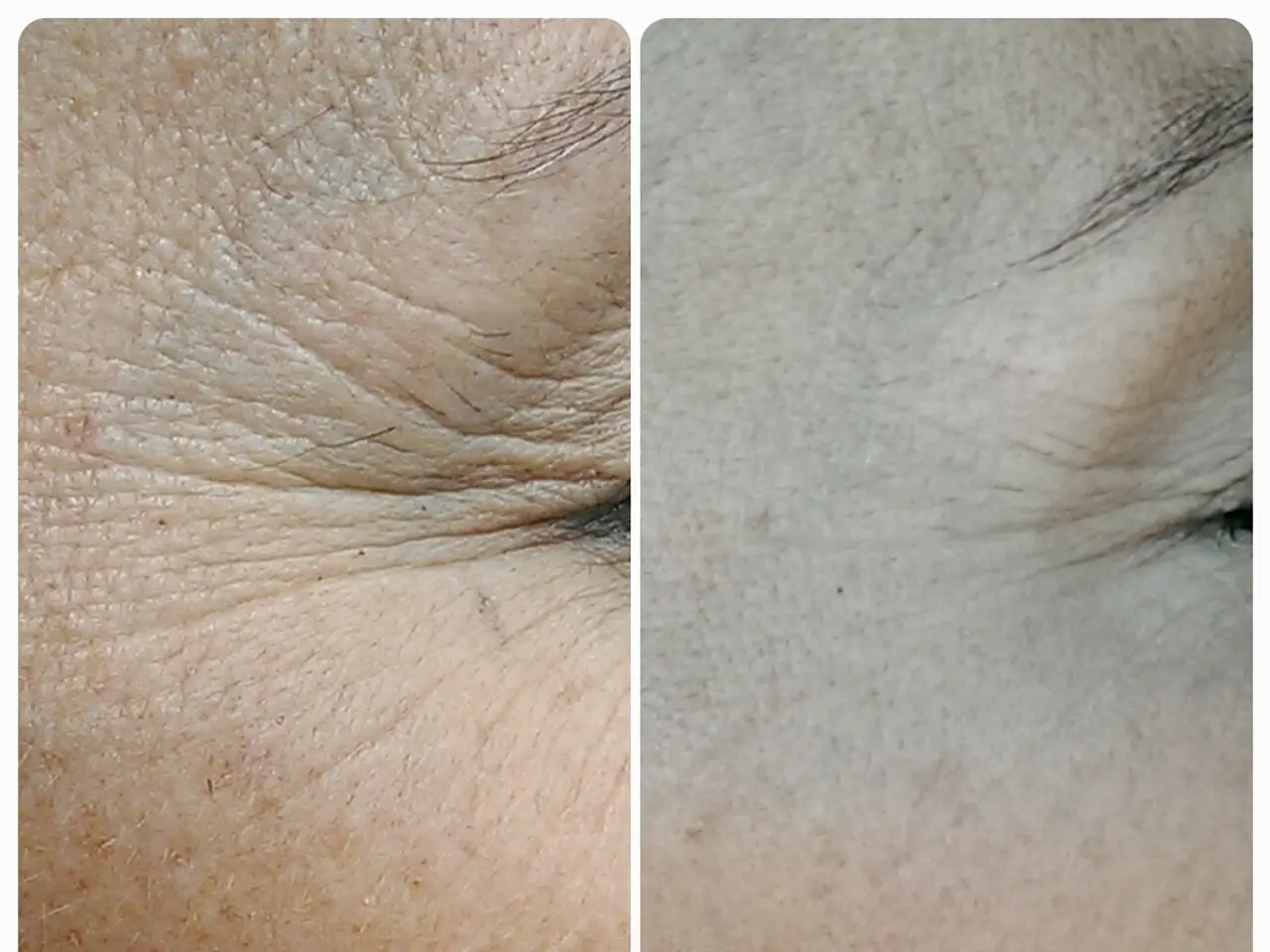Inside Perspectives: Revelation of Internal Compositions
The human skin, our body's largest organ, is a marvel of complexity and functionality. Comprised of three main layers - the epidermis, dermis, and hypodermis - each layer houses specific cells and structures with distinct roles.
The Epidermis: A Tough Protective Barrier
The epidermis, the outermost layer, serves as a protective barrier against infections, UV radiation, chemicals, and physical damage. It is stratified into layers, with the outer stratum corneum, a layer of dead, flattened cells providing a tough protective layer, and the stratum basale, where new cells are generated and pushed upwards. The epidermis is home to keratinocytes, melanocytes, Langerhans cells, and Merkel cells, each with unique functions. Keratinocytes, making up about 90% of epidermal cells, produce keratin, a protein that strengthens the skin. Melanocytes produce melanin, the pigment that gives skin its colour and protects against UV damage. Langerhans cells are part of the immune system, detecting pathogens and activating immune responses. Merkel cells are sensory receptors that detect light touch.
The Dermis: Strength, Elasticity, and Sensation
Beneath the epidermis lies the dermis, a layer rich in collagen and elastin fibres, providing structural strength and elasticity. It also houses blood vessels that supply nutrients and regulate temperature, hair follicles, sweat glands, sebaceous glands, and nerve endings responsible for sensations such as touch, pain, heat, and cold.
The Hypodermis: Insulation and Energy Storage
The hypodermis, the deepest layer, acts as insulation to conserve body heat, stores energy in fat, cushions underlying muscles and bones, and absorbs shock, being mainly made up of fat cells and connective tissue.
In summary, the skin acts as a protective barrier, regulator of body temperature, sensory organ, and participant in immune defense, enabled by its layered structure and specialized cells. The cross-sectional view, a two-dimensional image that illustrates an object's internal geometry and organization, is a valuable tool in understanding the skin's structure and functionality in various disciplines, including engineering, biology, and architecture.
References:
- Skin Structure and Function
- The Skin: An Overview
- The Skin: An Introduction
- The Skin: The Basic Unit of the Skin
- The Skin: The Functions of the Skin
Science and health-and-wellness intertwine in the study of skin care and medical conditions, as this largest organ of our body is designed to protect us from various threats while maintaining a delicate balance. For instance, the epidermis, with its protective layer of dead cells (stratum corneum), serves as a barrier against infections, UV radiation, and physical damage. Simultaneously, it houses melanocytes, whose production of melanin protects against UV damage and contributes to skin color. On the other hand, medical-conditions like skin-conditions such as acne, psoriasis, or eczema, can arise due to imbalances in the skin, and understanding these conditions requires an awareness of the skin's specific cell types, including keratinocytes, Langerhans cells, and Merkel cells, each playing unique roles in skin functioning.




